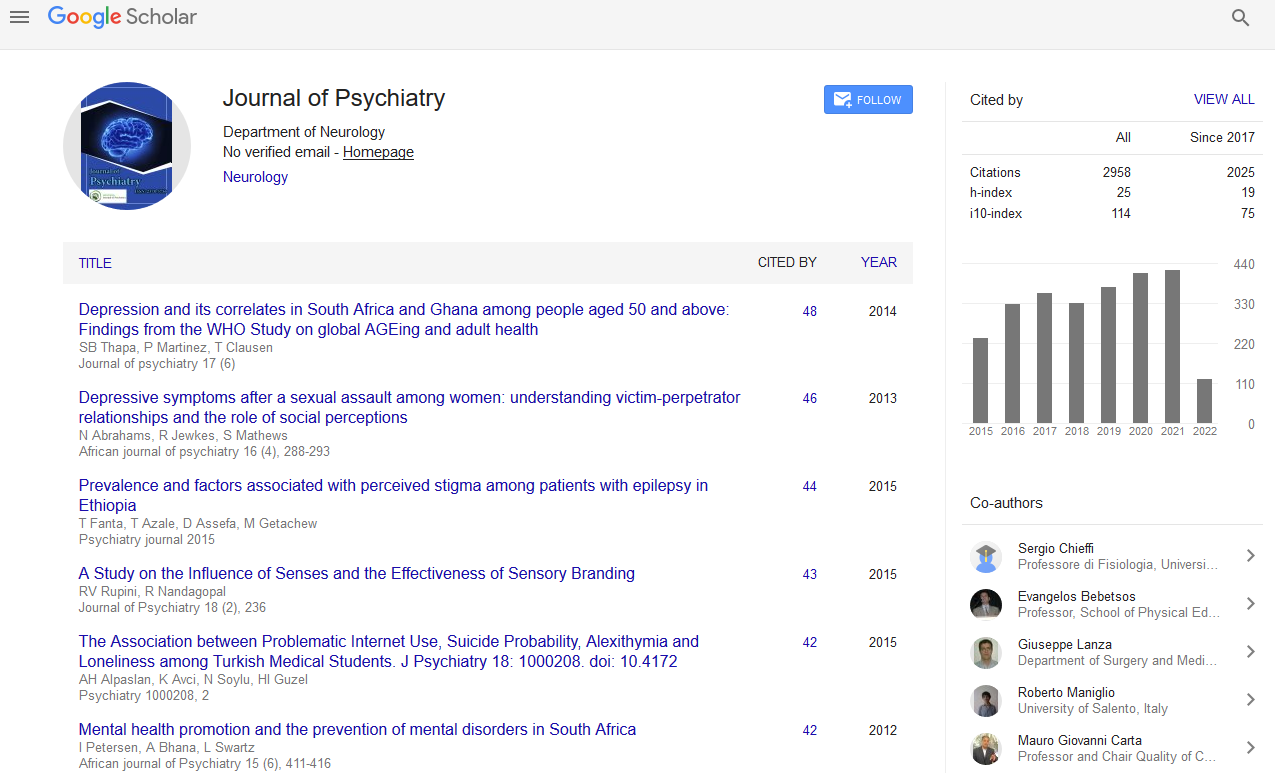PMC/PubMed Indexed Articles
Indexed In
- RefSeek
- Hamdard University
- EBSCO A-Z
- OCLC- WorldCat
- SWB online catalog
- Publons
- International committee of medical journals editors (ICMJE)
- Geneva Foundation for Medical Education and Research
Useful Links
Share This Page
Open Access Journals
- Agri and Aquaculture
- Biochemistry
- Bioinformatics & Systems Biology
- Business & Management
- Chemistry
- Clinical Sciences
- Engineering
- Food & Nutrition
- General Science
- Genetics & Molecular Biology
- Immunology & Microbiology
- Medical Sciences
- Neuroscience & Psychology
- Nursing & Health Care
- Pharmaceutical Sciences
Abstract
Stimulation of cerebral neurogenesis with transcatheter intracerebral laser revascularization (photobiomodulation) in patients with Alzheimer's disease
Ivan V Maksimovich
Background:
The research is devoted to cerebral neurogenesis after intracerebral laser revascularization (photobiomodulation (PBM)) in patients with Alzheimer's disease (AD).
Keywords: photobiomodulation, Alzheimer’s disease, dementia, mechanisms of action, animal models, clinical trials
Introduction of Photobiomodulation:
Photobiomodulation (PBM) describes the therapeutic use of red or the near-infrared light to stimulate healing, relieve pain and also inflammation. It prevents tissue from dying. Photobiomodulation (PBM) used to be called as low-level laser or light therapy (LLLT). But the name was changed to reflect the fact that the term low was undefined. Lasers were not absolutely required and inhibition of some processes was beneficial. Photobiomodulation therapy (PBMT) describes the use of PBM as a treatment for various diseases or for the disorders. Photobiomodulation (PBM) was discovered over 50 years ago by Endre Mester in Hungary. Working with hair regrowth and wound healing in mice. Since then Photobiomodulation (PBM) has gradually become more accepted by the medical profession, physical therapists, and also the general public. This increase in acceptance is partly due to the increased availability of light-emitting diodes (LEDs) with wavelengths in the red and NIR regions and substantial levels of power density up to 100 mW/cm2 over fairly large areas. Most available evidence suggests that the LEDs perform equally well compared to the lasers of similar wavelengths and power density. However the LEDs have the advantages of more safety, lower cost, and better suitability for the home use.
Published Date: 2021-03-29;


